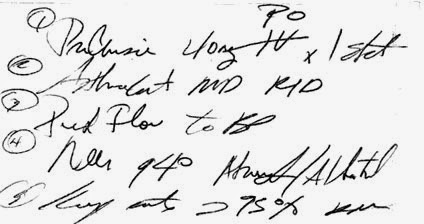So far, my posts have been focused
more on the software side of ICT in hospitals, such as EHR, CPOE, and CDS. This
time, however, I will focus more on the hardware side of it.
When doing a more research about
the concept of connected hospital explained in my previous post, I came across this
video about Toronto General Hospital.
The video was produced in 2010 and shows
how the best practices looked like at that time: installing a battery-powered PC
into nurse’s medication carts (dubbed “MedCart”) to replace a traditional paper
based instruction, and using a Wireless Devices on Wheels (WDoW) so physicians
have a constant EHR and CPOE access. Of course, these efforts chiefly aimed to ensure
portability and mobility of information access which increase not only the hospital
operational efficiency, but also the quality of patient care.
But these hardware technologies became a
little bit outdated two years later, when people saw Apple’s iPad (and arguably any tablet devices) as a
genuine disruptive technology which will replace the MedCart, WDoW and other
Computer on Wheel (COW) technologies. Why would a physician pushing a cart with
a big computer on it when he / she can access the same information through an
iPad? The iPad's battery life is also good for 10 hours, perfect for a hospital
environment. As comparison, a typical COW has a battery life of 4 hours (although
some of them are lasting for 12 hours). When the nurses or physicians need to
change the battery in the middle of the shift, it is of course seen as counterproductive.
A research shows that 62%
of US physicians use a tablet device, in which iPad is the dominant platform, for
professional purposes in 2012. To give you a better illustration on how iPad changes the
hospital operation, Healthcare Australia (HCA) has the following video:
So these are the past and present of ICT in hospitals. How about the
future?
Now, the hospitals and other application developers are visioning the
implementation of wearable technologies, such as Google Glass, to support health care service. As of now, at least four startups are focused on Google Glass application for healthcare. So
how will exactly Google Glass improve hospitals operations? Please, compare the
previous videos with the one below.
As you can see, Google Glass is envisioned to be connected with EHR,
enable remote collaborations between physicians and hospital staff, help monitoring
the patients’ vital status anytime and anywhere, and facilitate tele-consultation with specialists.
All these can be achieved instantly in a real time basis. Furthermore, unlike using iPad and other tablet devices, using a wearable
technology like Google Glass means that the physicians and other health care providers do
not need to get their hand off the patient while accessing important information.
The efficiency in the hospital operation has never been better.
That's it for now!








